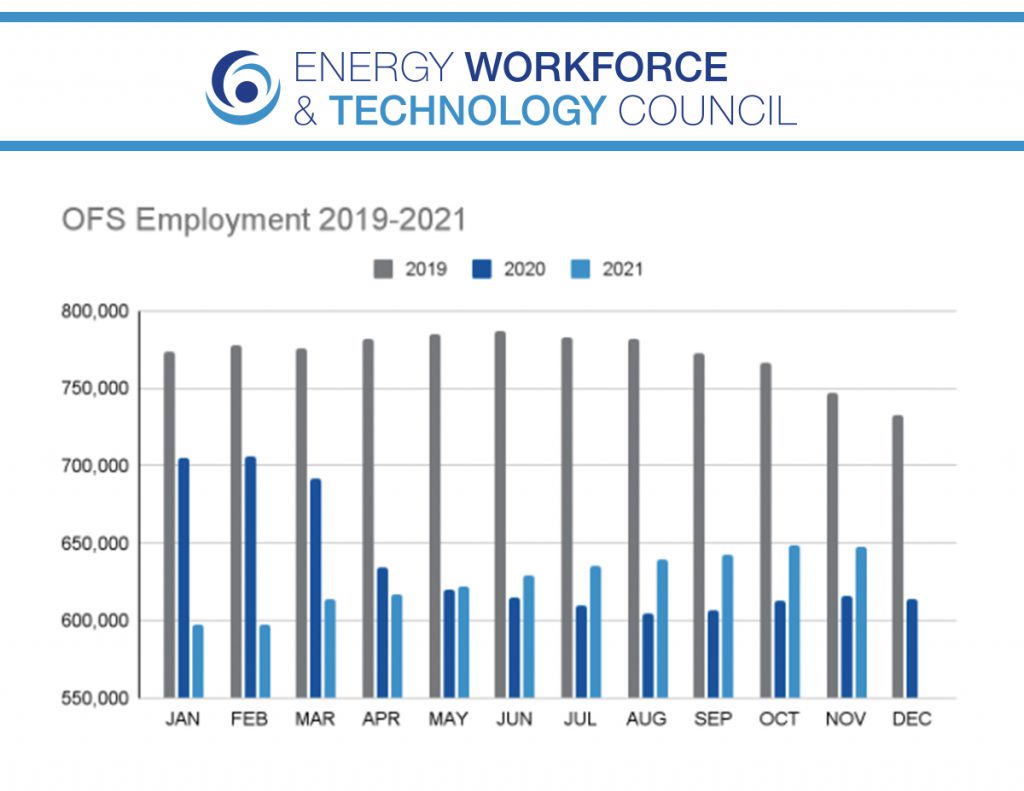Employment in the U.S. oilfield services and equipment sector fell by an estimated 818 jobs in November after eight straight months of growth, according to preliminary data from the Bureau of Labor Statistics (BLS) and analysis by the Energy Workforce & Technology Council (Council). Losses were sharpest in oil and gas extraction, as well as support activity.
The 0.1% loss in November comes as overall U.S. job growth marked the worst month this year, coming in at less than half of analysts expectations. Revised BLS data for the period of August-October had shown sector employment increase by 1.9% during that period.
The oilfield services and equipment sector has added slightly more than 55,000 jobs since March after hitting a pandemic low of 597,067 jobs in February, according to BLS data.
The monthly Energy Technology & Services Employment Report, compiled and published by the Council, estimates a peak of more than 109,000 pandemic-related job losses. Since then, the sector has restored more than 50,000 positions, bringing total pandemic employment losses to 59,043 jobs.
Using BLS data, the Council, in consultation with researchers from the Hobby School of Public Affairs at the University of Houston, found that reductions were heaviest in April 2020, when the sector shed 57,294 jobs — the largest one-month total since at least 2013.
Sector employment has grown at an average monthly rate of 0.92% in 2021 as companies have maintained focus on reducing debt, repaying investors and investing in research and development.
The Council is the national trade association for the energy technology and services sector representing 600,000 jobs in the technology-driven energy value chain. More than 450 member companies are involved in energy equipment manufacturing, drilling, well completions, well services, pressure pumping, renewable energy technology and servicing, geothermal development, and more.
The innovative men and women who comprise this sector are leaders in developing and deploying innovative technologies on a global scale that increase efficiency, improve environmental performance, and reduce greenhouse gas emissions.
Below are the top states for employment in the energy technology and services sector, and estimated job gains in November 2021 compared to the same month in 2020, according to BLS data:
- Texas — 314,886, +17,781 jobs
- Louisiana — 53,956, +3,047
- Oklahoma — 49,175, +2,777
- Colorado — 26,235, +1,481
- New Mexico — 24,167, +1,365
- California — 23,650, +1,335
- Pennsylvania — 23,392, +1,321
- North Dakota — 20,096, +1,135
- Wyoming — 14,991, +847
- Ohio — 10,727 +606
- Alaska — 10,016, +566
- West Virginia — 9,887, +558
Energy technology and services sector employment is estimated by analyzing data published by the U.S. Bureau of Labor Statistics and covers the economic activities of energy technology and services companies, which include oil and gas extraction, construction and manufacturing. Total employment is estimated using the Quarterly Census of Employment and Wages, published by BLS, and jobs data reported by BLS monthly.
Note: BLS data is preliminary for the two most recent months and is subject to revision. The Council incorporates monthly totals according to BLS corrections, and updates the statistical model quarterly.





